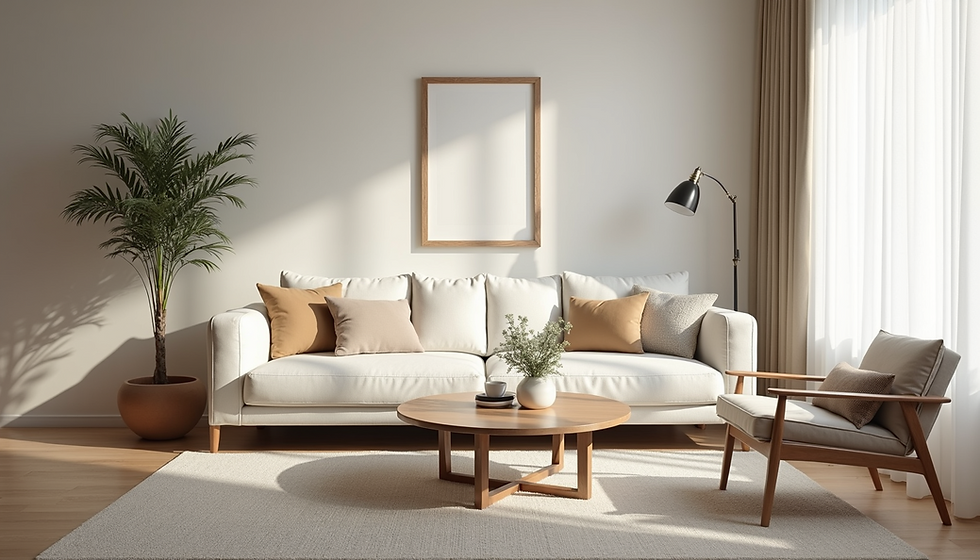Unveiling the Emotional Architecture of Rightsizing and Downsizing SeniorsThrough Design Psychology Insights
- CoCo Design

- Jul 2
- 4 min read
As the world continues to evolve, many individuals and families are rethinking their living situations. This process, known as rightsizing, involves intentionally downsizing or modifying one's living space to align better with current lifestyles and emotional needs. While rightsizing often focuses on practical factors like space, cost, and sustainability, the emotional architecture that design psychology offers can profoundly impact this transformative journey.
Recognizing the emotional connections to our environments can greatly enhance the rightsizing experience. This post explores how design psychology plays a crucial role in facilitating a positive rightsizing journey, empowering individuals to embrace change with confidence and comfort.
The Essence of Rightsizing Vs Downsizing Seniors
Rightsizing is not just a trend; it's a mindset shift. It is about evaluating one’s living environment to cater to evolving personal, emotional, and financial dynamics.
As we move through different life stages, the spaces we inhabit may no longer serve us effectively. According to a survey by the National Association of Realtors, 50% of homeowners report feeling overwhelmed by clutter. Recognizing when to rightsize can lead to improved well-being. This journey allows individuals to redefine what “home” means emotionally.
Emotional Attachment to Space
Every space we occupy evokes a spectrum of emotions, comfort, safety, nostalgia, or even grief. When rightsizing, acknowledging these feelings can be transformative.
Design psychology highlights emotional attachment to space, helping individuals express how certain environments affect them. For example, studies show that homes filled with personal items can increase happiness by up to 30%. Understanding these emotional ties enables individuals to approach rightsizing and downsizing seniors thoughtfully, making choices that resonate with their current selves.
The Role of Design Psychology
Creating Significance in Smaller Spaces
Many fear losing the essence of home when downsizing. However, design psychology shows that well-planned smaller spaces can still embody warmth and belonging.
For instance, a room designed with minimal clutter can enhance feelings of openness. A color study indicated that rooms painted in warm hues can evoke feelings of comfort and security, with 80% of participants preferring these areas to cooler, clinical spaces. Thoughtful decor choices can replace feelings of loss with a renewed sense of purpose.

Using Natural Elements to Foster Connection
Integrating natural elements in design can significantly impact emotions. Natural light, plants, and eco-friendly materials contribute to well-being and emotional connection.
Research indicates that incorporating plants can reduce stress and anxiety levels by 30%. Biophilic design—which connects people to nature—can turn smaller spaces into tranquil retreats, effectively easing the anxiety often associated with downsizing.
Personalizing Spaces to Reflect Identity
Personal identity becomes crucial as individuals rightsize. Curating photographs, art, and favorite belongings helps create a space that feels uniquely “theirs,” leveling the emotional experience regardless of size.
Design psychology emphasizes personal narratives. A study found that homes adorned with meaningful items can enhance emotional attachment by over 40%. Each piece should inspire joyful memories, ensuring residents feel completely at home, even in smaller spaces.
Practical Steps for Emotional Success in Rightsizing
Rightsizing involves both emotional and logistical factors. Here are a few practical steps to ease the journey:
Reflect on Emotional Needs: Before making changes, identify what feelings your current space evokes. Consider which aspects are vital to retain and what you can let go.
Plan with Purpose: Design your new space to not only meet physical needs but also nurture emotional well-being. Prioritize functional layouts and colors that uplift.
Incorporate Nature: Focus on adding natural elements to your new design. Optimize natural light, include greenery, and create views to the outdoors, no matter your space size.
Personalize with Meaning: Choose belongings with care, ensuring they bring you joy and represent your identity, creating a sense of belonging.
Overcoming Challenges in the Rightsizing Journey
Rightsizing can bring emotional growth alongside challenges. Letting go of possessions may bring sadness or discomfort.
Design psychology offers strategies for coping, focusing on new beginnings rather than losses. Framing this journey as an opportunity for renewal can lead to richer, more fulfilling living experiences. For example, many individuals report feeling lighter and more free after decluttering their homes.
The Lasting Impact of Thoughtful Design
The emotional architecture of rightsizing reflects one's journey through personal transitions. Each choice made with design psychology influences the emotional quality of the new living space.
By prioritizing emotional well-being during rightsizing, individuals can create environments that meet both physical and emotional needs. Engaging thoughtfully with our spaces, we can navigate the complexities of rightsizing with confidence and positivity.

Embracing Change Through Design
Ultimately, understanding the emotional nuances of rightsizing reveals the intricate connection between our environments and emotions. By incorporating design psychology into the rightsizing process, individuals can approach change as an opportunity to cultivate a living space that is not only practical but also deeply fulfilling.
By recognizing the emotional significance of space, we can create homes that resonate with our identity, promote growth, and enhance well-being. As you embark on your rightsizing journey, consider how design psychology can illuminate your path, transforming your living experience into one of harmony and joy.




Comments